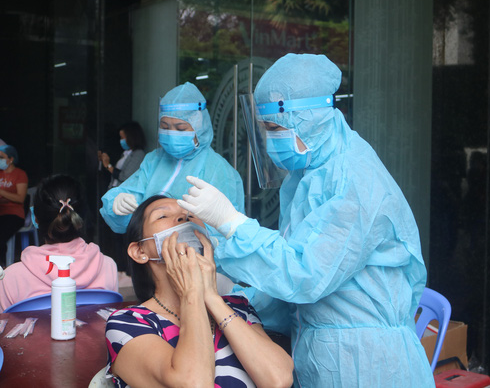In order to sample the sheer number of people in Vietnam’s massive COVID-19 testing campaign, health workers may sanitize their gloves between collecting individual samples, rather than put on a new pair.
According to Huynh Minh Tuan, head of the department of infection control at University Medical Center Ho Chi Minh City, all health workers must wear medical gloves while collecting samples for COVID-19 testing, as well as for the screening of other infectious diseases, to protect both themselves and the tested person.
The Ministry of Health’s Decision No. 5,188, which was issued last December, promulgates that each health worker must wear two pairs of gloves, with the inner layer not exposed to any testing tools.
The decision also required health workers to change gloves after collecting samples from each individual.
On June 24, the Health Ministry updated their policies on the use of personal protective equipment (PPE) in COVID-19 testing.
These new policies dictate that health workers must use a pair of medical gloves during sample collection, but may sanitize the gloves with a 60 to 80 percent alcohol solution between samples, rather than put on a new pair.
As alcohol can gradually damage the gloves, health workers are required to change gloves after they were sterilized with alcohol six times or when the gloves begin to show signs of damage.
Like us on Facebook or follow us on Twitter to get the latest news about Vietnam!

























